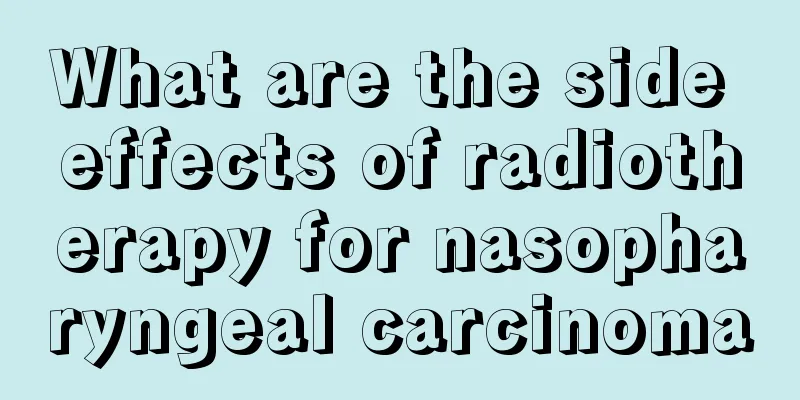Hyperthyroidism caused by subacute thyroiditis

|
There are many causes of hyperthyroidism. Some people may develop hyperthyroidism if they do not receive timely treatment after suffering from subacute thyroiditis. Subacute thyroiditis is a relatively common thyroid disease that can lead to endocrine instability in the human body. In daily life, if we feel dizzy, we must conduct relevant examinations in time, which is very helpful in relieving subacute thyroiditis. So, what should we do if subacute thyroiditis causes hyperthyroidism? 1. Early days The onset is usually sudden, with fever, accompanied by chills, fatigue, weakness and loss of appetite. The most characteristic symptom is pain and tenderness in the thyroid area, which often radiates to the submandibular area, behind the ear, or neck. The pain worsens when chewing and swallowing. The range of thyroid lesions varies, and may start in one lobe and then expand or transfer to another lobe, or always be limited to one lobe. The affected glands are enlarged, hard, and painful. When the lesions are extensive, a large amount of thyroid hormone and non-hormonal iodinated protein in the follicles are temporarily released into the blood. Therefore, in addition to the general manifestations of infection, common manifestations of hyperthyroidism may also occur. 2. Mid-term When thyroid hormones in the thyroid acinus are depleted due to infection and destruction, before the thyroid parenchymal cells are repaired, the serum thyroid hormone concentration may drop to the level of hypothyroidism, and clinically it may turn into hypothyroidism. 3. Recovery period The symptoms gradually improve, and the goiter or nodules gradually disappear. In many cases, small nodules remain and are slowly absorbed. If treated promptly, most patients can recover completely, and only a few develop permanent hypothyroidism. In mild or atypical cases, the thyroid gland is only slightly enlarged, with mild pain and tenderness, no fever, and mild systemic symptoms. Clinically, there may not be any signs of hyperthyroidism or hypothyroidism. The course of this disease varies in length, from a few weeks to more than half a year, generally about 2 to 3 months, so it is called subacute thyroiditis. After the disease is relieved, it may relapse. |
<<: What can I eat if I have hyperthyroidism
>>: Tips for treating swollen eyelids due to hyperthyroidism
Recommend
Analyzing the causes of colorectal cancer that everyone needs to pay attention to
Intestinal cancer is a very common intestinal mal...
Can beef and goose meat be eaten together
Beef and goose meat are meat products that we can...
Can osteosarcoma affect life expectancy
Osteosarcoma is a tumor of osteoblasts. The cause...
How to effectively treat hypertension and arteriosclerosis?
In the treatment of hypertension and arterioscler...
Is it possible to just wait for death in the late stage of pituitary tumor
Pituitary tumor is a brain tumor. Many people hav...
Symptoms before death of patients with advanced uterine tumors
Uterine tumors seriously endanger women's hea...
Can I have sex in the second month of pregnancy?
During the first three months of pregnancy, women...
How to deal with the oil after frying
Eating fried food occasionally will not have any ...
How to exercise with high blood lipids? Teach you 4 exercise methods for high blood lipids
With the development of society, high blood lipid...
What kind of crown is generally good for back teeth
Teeth are an indispensable tool for people to che...
Let's take a detailed look at the causes of esophageal cancer
As a common tumor disease, esophageal cancer will...
What are the symptoms of rheumatic fever and rheumatism
Rheumatism is a type of disease that many of our ...
The correct way to lose weight
In winter, people don’t like to exercise so it is...
What are the symptoms of early bleeding in cervical cancer
Symptoms of early bleeding from cervical cancer m...
How to diagnose nasopharyngeal carcinoma and what methods to use to check
If nasopharyngeal cancer is discovered in life, i...









